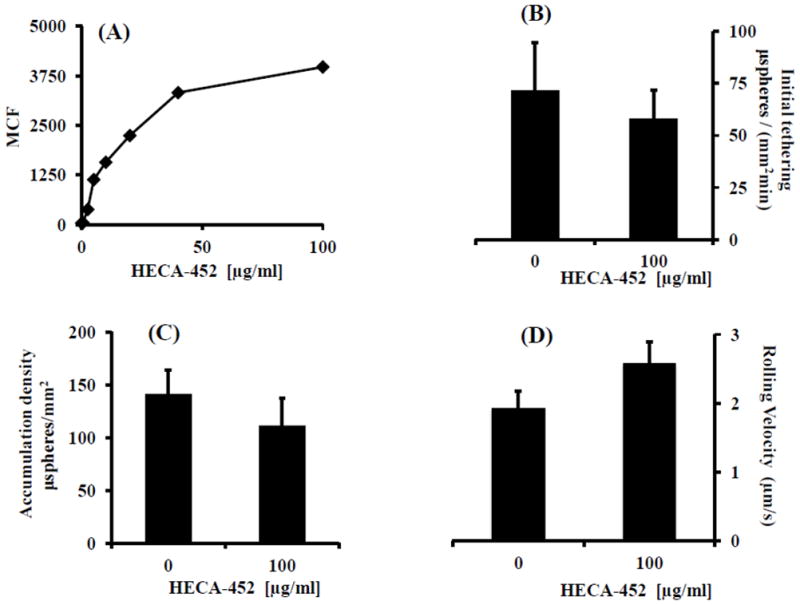Figure 3.

HECA-452 does not block sLex microsphere initial tethering and accumulation on IL-1β activated HUVEC and does not significantly increase the rolling velocity. (A) SLex microspheres were treated with various concentrations of HECA-452, as indicated, and then analyzed via flow cytometry. The Mean Channel Fluorescence (MCF) for the population of sLex microspheres is plotted vs. the concentration of HECA-452. (B, C and D) SLex microspheres were untreated or treated with 100 μg/ml HECA-452, as indicated, prior to the adhesion assay and perfused over 4 h. IL-1β activated HUVEC at a shear stress of 1.5 dynes/cm2. The initial tethering during the first 2.5 minutes of flow (B), the number of sLex microspheres present after the 2.5 minutes of flow (C), and the rolling velocity (D) was determined. A coating concentration of 0.125 μg/mL sLex was used for preparing the sLex microspheres; shear stress = 1.5 dynes/cm2; Results shown are the average of n=3.
